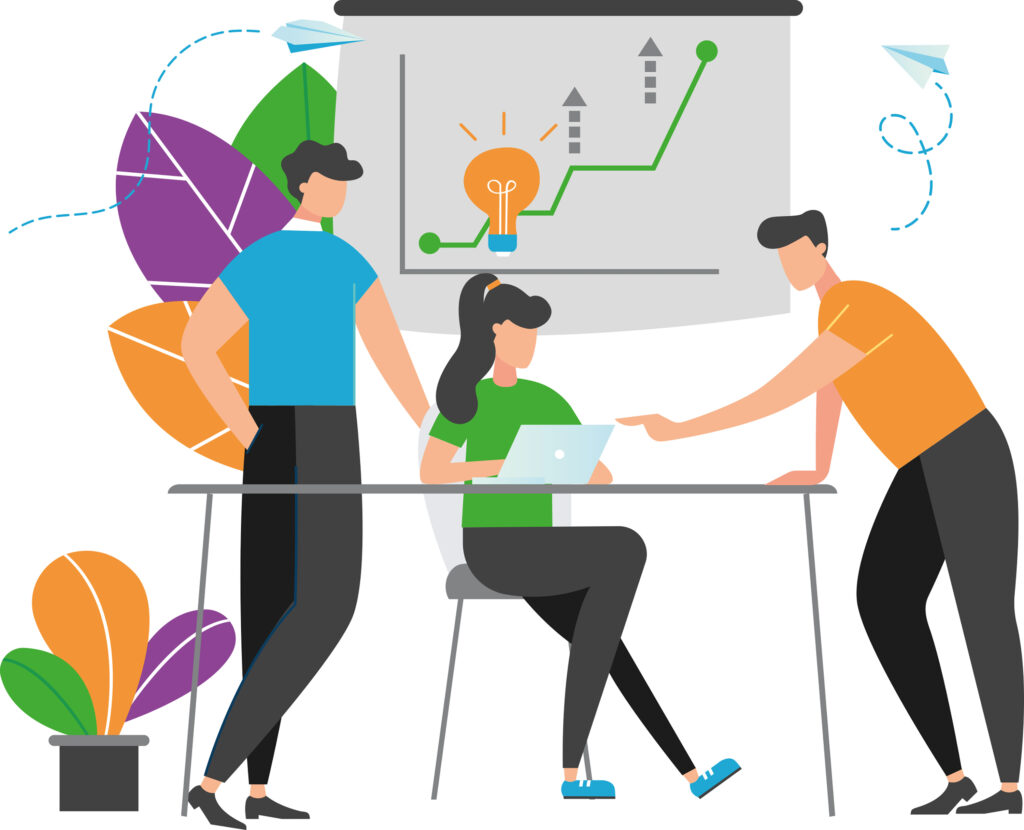The classic B2B playbook—generate demand, close the deal, move on—still echoes through many sales teams. But today’s buyers are flipping the script. By the end of 2025, more than half of all $1 million-plus transactions will happen without direct sales involvement.¹ And with most evaluations done before sales even steps in, your best chance to stand out often comes after the purchase.
That’s especially true as millennial and Gen Z decision-makers gain influence. Even enterprise-sized deals can close through a website, a marketplace, or the product itself.
When your first human touchpoint comes after the signature, every interaction becomes more than support—it becomes your brand in action. Early engagement builds trust. Sustained engagement builds growth.
Because post-sale isn’t just about keeping customers. It’s about helping them grow.
Reframe the Journey: From Closing to Growing
Customer success teams are focused on long-term value but they can’t go it alone. The transition from closed deal to growing account starts earlier. Sales and marketing are often the first to hear what customers truly care about, making them essential to what happens next.² High-performing teams treat post-sale like a shared mission, not a handoff. They collaborate across roles, track the right signals, and build on the momentum that sealed the deal in the first place.
Here’s how to turn three key stages of the customer journey into levers for lasting growth:
1. Onboarding: Set the Tone
This is where excitement meets execution. It’s the customer’s first real glimpse of whether your team can deliver what was promised. It’s also where the relationship really begins. When it’s done right, onboarding becomes a springboard for trust, momentum, and long-term success.
What can go wrong:
When onboarding feels generic or fragmented, it sends a loud message: We were sold a vision. Now we’re getting the handoff. The customer expected a team that gets them. Instead, they’re met with silence or confusion. Sales moves on. Marketing pivots. Nobody owns the transition, and the energy that closed the deal vanishes.
What works:
- Sales leads the transition, not just the transaction. An internal kickoff can set the tone before the customer ever logs in. Sales brings the full team up to speed, on what the customer bought and why they bought it. That includes goals, blockers, internal dynamics, and success measures.
- Marketing stays in the loop, with purpose. They deliver assets that work in the real world: use-case-driven one-pagers, explainer videos, and fresh content tailored to early adoption. Better yet, they can build custom content to keep momentum going.
When onboarding starts with alignment and clarity, it sets the entire customer relationship up for success.
2. Retention: Strengthen the Relationship
This is where deals deepen, or drift. The early wins are on the board, and now it’s about staying visible, helpful, and relevant. When customers feel genuinely supported and seen, they don’t just stick around. They speak up, lean in, and evolve into partners. The difference between a quiet account and a thriving one often comes down to the consistency of connection.
What can go wrong:
The customer hits a milestone; then hears nothing. Their needs change. Usage drops. New players join their team. But your team doesn’t check in, and by the time renewal rolls around, it’s a scramble.
What works:
- Sales stays close. They help keep everyone on track through light check-ins that surface new goals, new roles, and new signals of change.
- Marketing keeps the story going. They refresh content with new research, customer spotlights, or creative takes on how to use your solution in evolving ways. Plus, they elevate accounts through speaking invites and feature content that rewards loyalty and showcases success.
Retention isn’t a backstop—it’s a springboard.
3. Expansion and Advocacy: Scale What’s Working
This is where momentum turns into impact. Your best customers already believe in your value. The key is making that belief visible and building on it. When customer success becomes a story worth sharing, it opens the door to new conversations, stronger loyalty, and scalable growth. Growth doesn’t just happen. It’s invited, amplified, and aligned.
What can go wrong:
You wait until renewal to suggest something new. A competitor gets there first. Or the customer’s winning quietly, but no one captures it. Their story goes untold, and their influence stays untapped.
What works:
- Sales watches for signals. Strategic wins, leadership shifts, or new budgets? Perfect moments to suggest new solutions because you know where they’re headed.
- Marketing activates success. With quotes, stories, and reference-ready programs, they turn happy customers into visible champions, and visible champions into growth engines.
When customers see the value, they expand. When they feel valued, they advocate.
Post-Sale Strategy: Your New Growth Engine
Post-sale isn’t an afterthought. It’s your next go-to-market frontier. When sales and marketing stay aligned beyond the deal, they do more than retain customers. They surface new revenue, unlock advocacy, and turn customer success into repeatable momentum.
This is the shift modern B2B teams are making: post-sale isn’t someone else’s job. It’s a shared opportunity to drive value, influence, and growth. And when sales and marketing lead that charge together, post-sale isn’t just a phase in the journey. It’s the engine that makes the entire journey scalable.
- Forrester, Predictions 2025, B2B Marketing and Sales, October 2024.
- Forrester, The Forrester Customer Engagement Range Of Responsibilities Model, April 2025.
